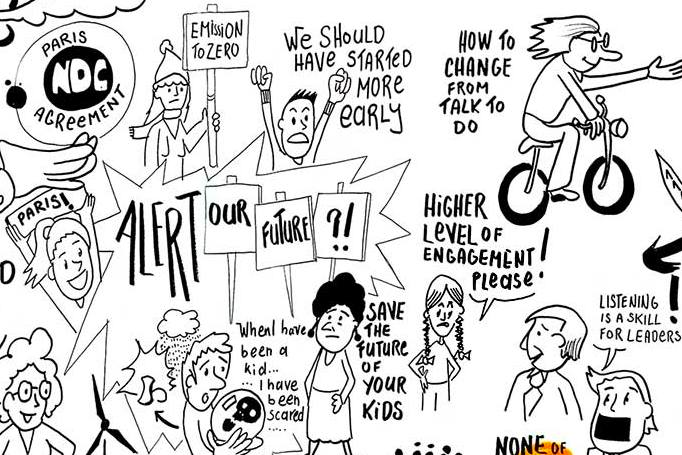The Trickle Down Theory: A Drop in the Ocean Does Not Change the Weather
- Ananya
- Jul 25, 2023
- 4 min read

Imagine standing on the shores of a vast ocean, contemplating the sheer magnitude of its size and power. Now, visualize dropping a single drop of water into its depths. Will that solitary drop cause a significant change in the ocean's tides or weather patterns? Of course not. Sorry Ron Pope, but your song has no reality to it. Similarly, in economics and social policy, we can draw out a similar analogy with the "Trickle Down Theory." This theory is often used as an excuse by the wealthy to accumulate their riches, positing will eventually "trickle down" to the rest of society and lead to widespread prosperity. However, in reality, the Trickle Down Theory falls short of its promises, leaving many struggling in the wake of the privileged few with disparities exacerbating.

The Trickle Down Theory gained prominence in the 1980s as a justification for economic policies on the supply-side. Advocates argued that by cutting taxes for the wealthy and reducing regulations, the resulting increase in their wealth and investments would ripple through the rest of society, leading to economic growth and opportunities for everyone. In theory, this would’ve made sense if these rich individuals invested back into their communities, but to the assurance of many critics, that is certainly not the case. In an ideal world, the rich wouldn’t be self-serving; but if that were true, many of them wouldn’t be rich at all. In essence, the prosperity of the rich would benefit the entire society. Unfortunately, not all of them are as charitable as this theory made them out to be.

Over time, the flaws in this theory have become rather obvious, especially in today’s post-pandemic world. The anticipated trickling down of wealth and opportunities was merely a case of disappointment for the majority of the population. Income inequalities are soaring, with the working class wages being stagnant as ever with diminishing social services and limited access to basic education and healthcare. The rich are getting richer, and the poor are getting poorer. At this point, it seems almost foolish to have even assumed that the rich would let their wealth trickle down when we’ve seen how much they enjoy accumulating and earning it.
One of the primary issues with the Trickle Down Theory is its assumption that the wealthy will reinvest their increased wealth into productive ventures that benefit the broader economy. However, in practice, much of the wealth has been diverted into speculative investments, offshore accounts, and financial instruments that do not directly contribute to job creation or societal well-being. This exacerbates income inequality and undermines the potential for sustainable economic growth.
Moreover, the Trickle Down Theory neglects the human aspect of socio-economic disparities. The socioeconomic gaps are widening, leading to social tensions and a sense of disillusionment among those who feel left behind by the system. As a result, social cohesion and trust in institutions has been eroded, posing further challenges to the fabric of society. There’s two completely opposite sides of the spectrum, and one is abusing the others’ desperation for wages to accumulate their own wealth. A prime example is fast fashion.
History has repeatedly shown that relying solely on the Trickle Down Theory to address economic and social issues is an inadequate strategy, we’re waiting and we’re watching but there’s nothing to watch for. While the mega-wealthy few certainly do experience increased prosperity, it’s clear that the benefits seldom reach those at the bottom of the socioeconomic ladder. It is rather naive to expect a drop of water to change the weather patterns of the entire ocean, so honestly the very name of this theory itself seems rather counterintuitive. Why should we designate people a whole ocean, when others barely have a drop?
To foster genuine economic growth and equitable prosperity, a more inclusive approach is needed. Policymakers must prioritize investments in education, healthcare, infrastructure, and social safety nets to empower individuals and create opportunities for upward mobility among social classes. By addressing the root causes of income inequality and ensuring a fair distribution of resources, societies can foster a thriving middle class, bolster consumer demand, and drive sustainable economic growth. There is no use in depending on the wealthier to be charitable, unfortunately, it’s not our job to decide what they do with their funds either.
Moreover, businesses can play a pivotal role in advancing equitable prosperity by embracing sustainable employment practices that prioritize fair wages, worker benefits, and environmentally responsible initiatives like fair trade. When businesses prioritize the well-being of their employees and communities, they contribute to a virtuous cycle of economic growth and social progress. We must leave behind the days of fast fashion, where underpaid workers make high-priced items that benefit only the wealthy CEO.
The Trickle Down Theory, like a drop in the ocean, has been greatly ineffective in bringing desired or even noticeable change. In crafting the more equitable and prosperous societies that we aim to see in the world, we must reject the notion that the economic prosperity of the few will naturally benefit the less privileged. Instead, we must actively work towards inclusive policies and practices that prioritize the well-being of all citizens alike. With such active action, we can harness the full potential of our collective resources and create a tide of shared prosperity that lifts the boats on all parts of the wealth spectrum. It’s time to bridge the gaps.



Comments